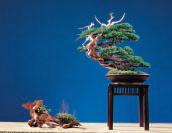|
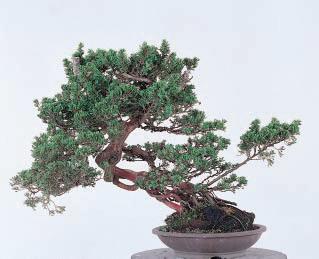
Front view before
creation, September of 1999
|
|
The cliff style bonsai normally appears with upward growing roots and
downward stretching trunks and branches. This work was named “Cliff.”
The style of the juniper was rarely seen, and the tree represented
a manner of facing danger fearlessly. It seemed as if a horse were
forging ahead to the cliff and had just stopped at the edge.
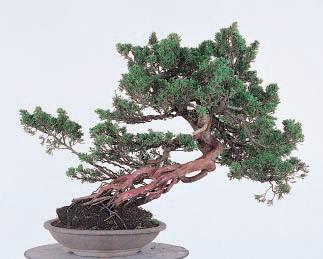
Back view before
creation
|
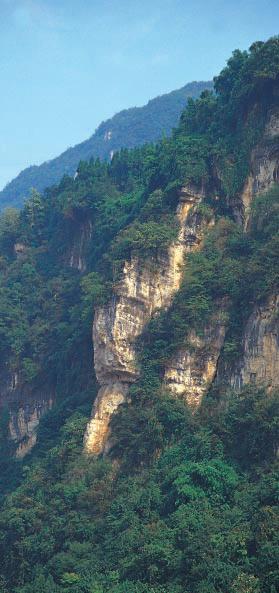
Cliffs in the three
Gorges of the Yangtze River |
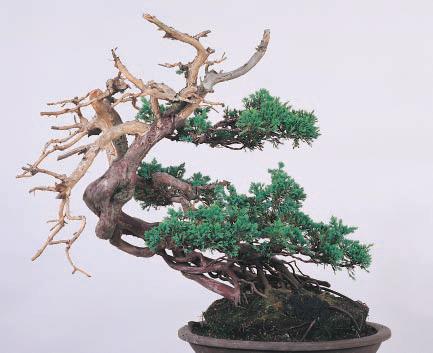
Peeling
the bark off unnecessary branches to make Shari;
front view before style arrangement and Si-Diao,
September of 1999
|
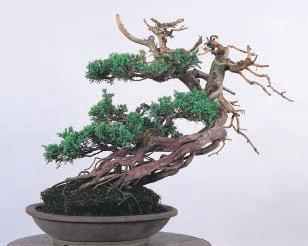
Back view
before style arrangement and Si-Diao
|
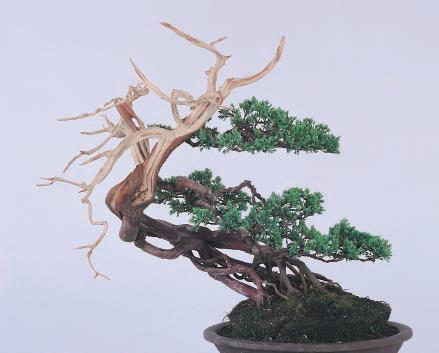
The amount of foliage
had increased after two months.
I arranged the style and applied Si-Diao to carve the thin branch once
again.
|
|
Providing
stable amounts of water and fertilizer is the most efficient way to
transform juvenile leaves into mature leaves. Since the buds will
germinate during the process of transformation, you must not remove the
buds or cut the leaves; otherwise the juvenile leaves will start growing
again because the supply between roots and leaves is unbalanced,
resulting in a failure to transform them into mature leaves. Therefore,
you should wait with patience and arrange the style until all of the
leaves become mature-shaped. You should wait until the transformation
succeeds, and then remove the longer buds and the former juvenile leaves
left following the transformation.
(Attention: The method of bud removal applied on Juniperus
chinensis in Itoigawa in Japan cannot be used on that in Taiwan, since
the species of Itoigawa has more bud points, but the species in Taiwan
has very few)
|
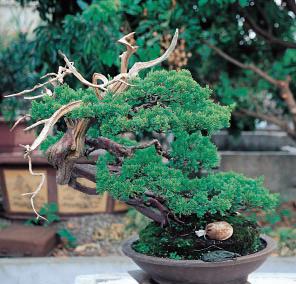
Transformation of
leaves,
August of 2001
|
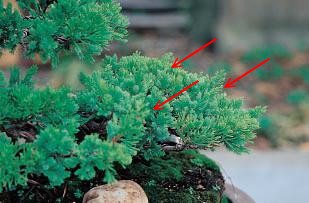
You must not take off
the buds or cut the leaves when part of the foliage has mature leaves,
as the arrows indicate.
|
|
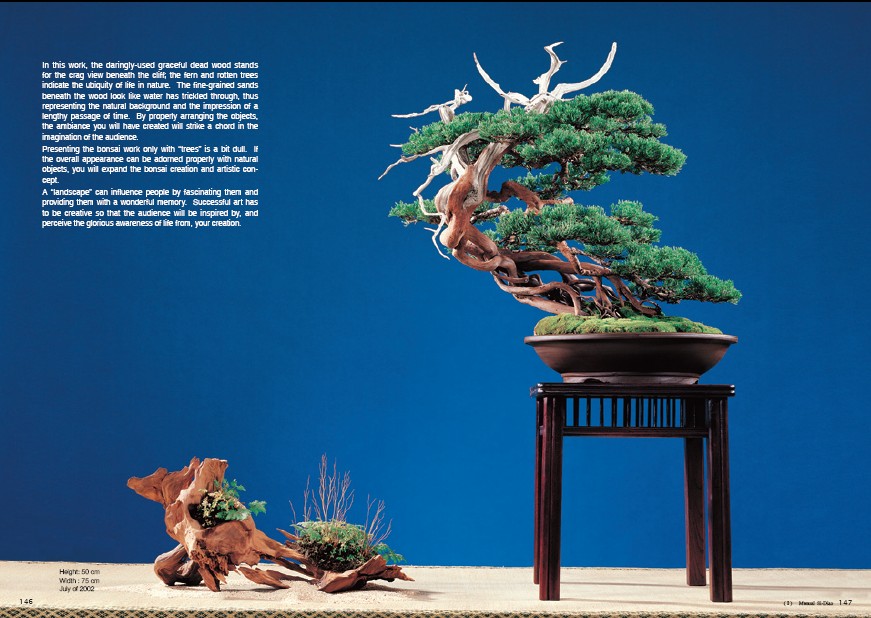
In this work, the daringly-used graceful dead wood stands for the crag
view beneath the cliff; the fern and rotten trees indicate the ubiquity
of life in nature. The fine-grained sands beneath the wood look like
water has trickled through, thus representing the natural background and
the impression of a lengthy passage of time. By properly arranging the
objects, the ambiance you will have created will strike a chord in the
imagination of the audience.
Presenting the bonsai work only with “trees” is a bit dull.
If the overall appearance can be adorned properly with natural objects,
you will expand the bonsai creation and artistic concept.
A “landscape” can influence people by fascinating them and providing
them with a wonderful memory. Successful art has to be creative so that
the audience will be inspired by, and perceive the glorious awareness of
life from, your creation. |
|
| |
|
